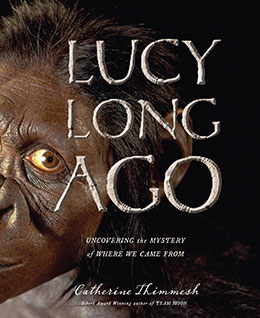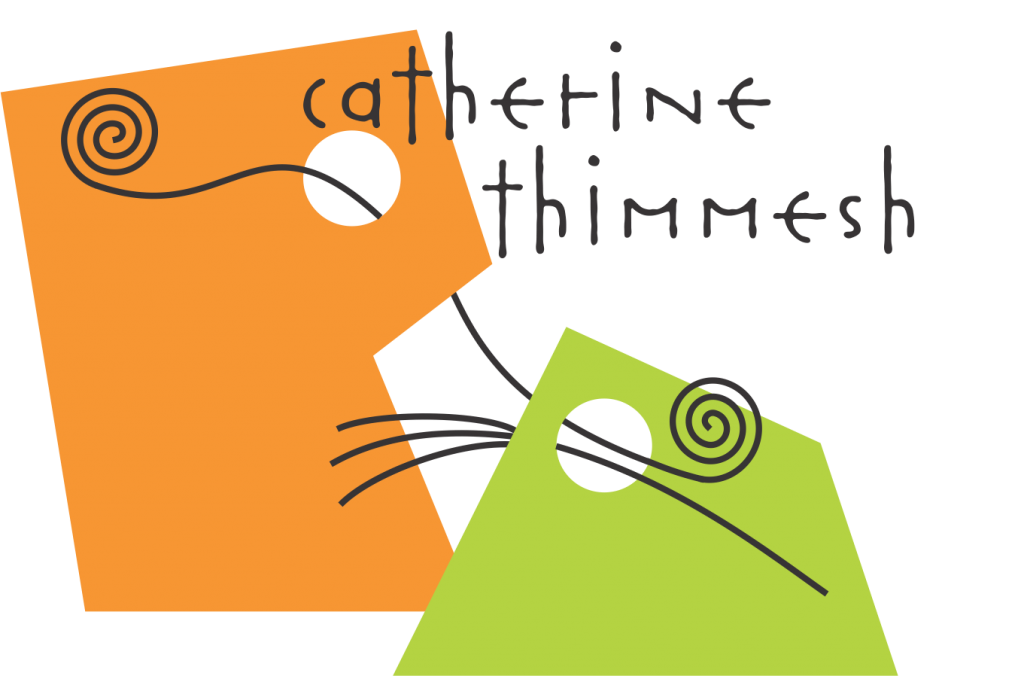Lucy Long Ago

HMH Books for Young Readers
978–0‑547–05199‑4
Find this book at your favorite library or used bookseller.
Uncovering the Mystery of Where We Came From
Illustrated in full color throughout with stunning computer-generated artwork and with rare paleo photography, this story of scientific sleuthing invites us to wonder what our ancestors were like. From the discovery of Lucy’s bones in Hadar, Ethiopia, to the process of recovering and interpreting them (a multidisciplinary approach with contributions from paleontologists, paleoanthropologists, archeologists, geologists and geochronologists), this book shows how a pile of 47 bones led scientists to discover a new—and, at 3.2 million years old, a very very old—species of hominid, ancestral to humans.
Scientists involved include: James Aronson, geochronologist at Dartmouth, NH; John Gurche, paleoartist at Cornell, NY; Donald Johansen, scientist at Institute of Human Origins at Arizona State University; Owen Lovejoy, biological anthropologist at Kent State, Ohio; Dirk Van Tuerenhout at Houston’s Museum of Natural Science, Texas.
Awards and Recognition
Kirkus Reviews Best Children’s Books of 2009
School Library Journal Best Books of 2009
Reviews
“Extensive research, clear organization and writing, appropriate pacing for new ideas and intriguing graphics all contribute to this exceptionally accessible introduction to the mystery of human origins, timed to accompany Lucy’s six-year tour of U.S. museums.” (Kirkus Reviews)
“Here’s a nonfiction book that deserves the highest of compliments: it reads like a science book … Thimmesh opens her narrative with a poetic conjecture that gives such adventure its mystery and due: “Long ago it lived … even before it had a name. It climbed trees; it roamed the savannah on two legs; it munched on berries and grasses.” The answer to the implied question—“What is ‘it’?”—propels the reader to turn page after page … a handsome book, but also a substantive one.” (The Horn Book)
“With unexpected simplicity and even poetry, Thimmesh uses two beginnings to tell the story of the hominid who changed humans’ family tree … the final portrait of Lucy as she may have looked is a stunner. Like the investigative method itself, this sparks questions and also answers them.” (Booklist)
The Beatles song “Lucy in the Sky with Diamonds” was playing the night paleoanthropologist Donald Johnson found the first fossilized remains of the hominid that became known around the world as Lucy. This extraordinary discovery changed how scientists understood one of the basic concepts of human evolution—it proved that our ancestors began walking upright before the size of their brains increased. Thimmesh uses this discovery to explore several topics in the fields of anthropology and evolutional biology, such as how the bones were fossilized, the process for deciding that Lucy belonged to a previously unknown species (Australopithecus afarensis), and the cast-making process that allowed biological anthropologist Owen Lovejoy to reconstruct her pelvis and prove that she was bipedal. The author even touches upon what fossils can’t teach us about our ancestors—their emotions and family patterns. The final chapter discusses the process used by paleoartist John Gurche to create a life-size sculpture of Lucy. The book’s greatest strength is how it underscores the fluidity of our understanding in a field like anthropology; it shows how one discovery can change the thinking of scientists in a dramatic way. This book also emphasizes the rigor of the sciences that study our human ancestors and explains clearly how these scientists carefully take the known to formulate new ideas about the unknown parts of our human history. The clear writing, excellent photographs, and the unique approach of exploring the field of anthropology through one spectacular specimen make this book a first purchase. (Caroline Tesauro, Radford Public Library, VA, School Library Journal)
““Every time Ms. Thimmesh writes a new book my heart goes pitter-pat, and this book was no exception with its fantastic length, great pictures, and superb research.” (Elizabeth Bird, Fuse #8)



